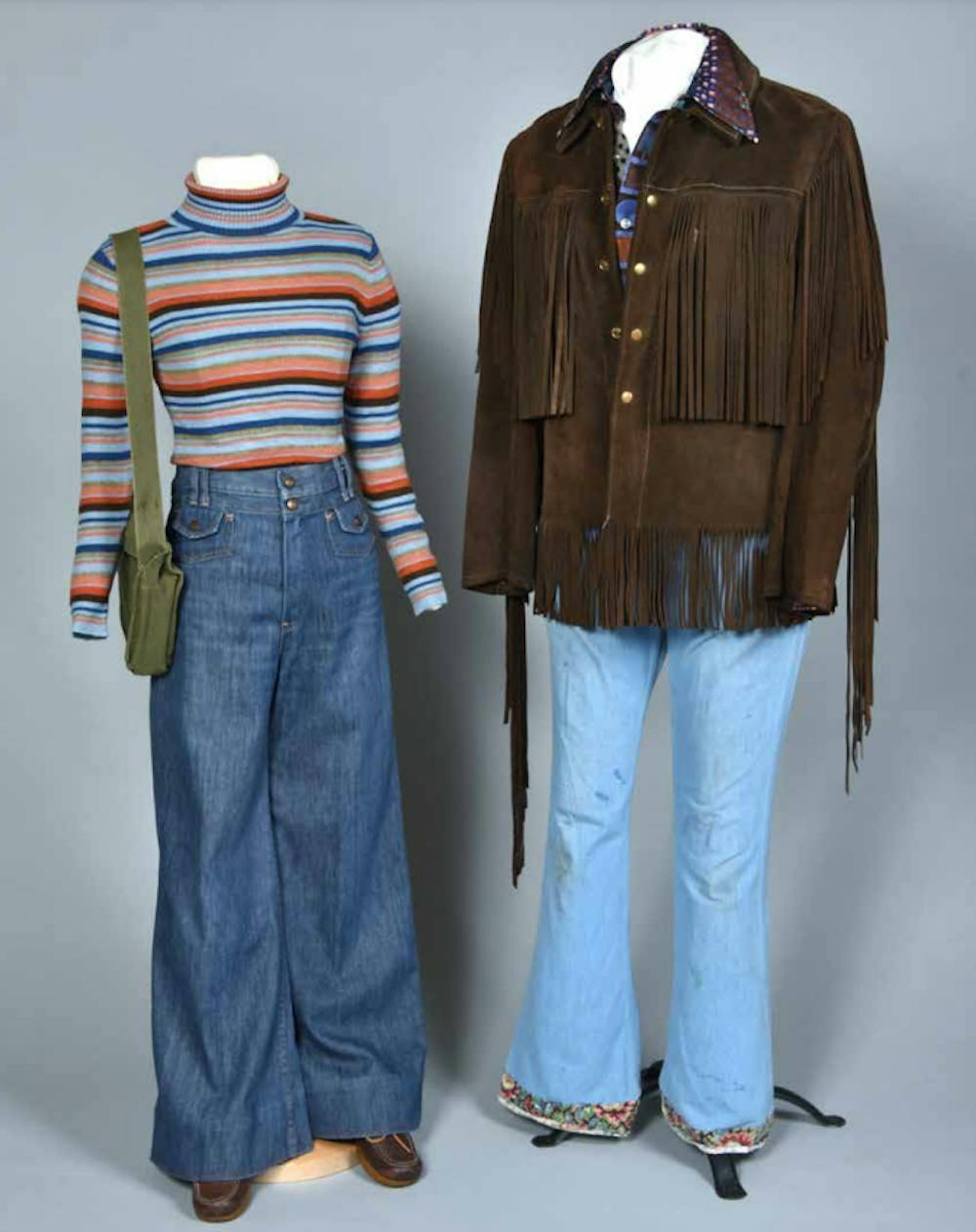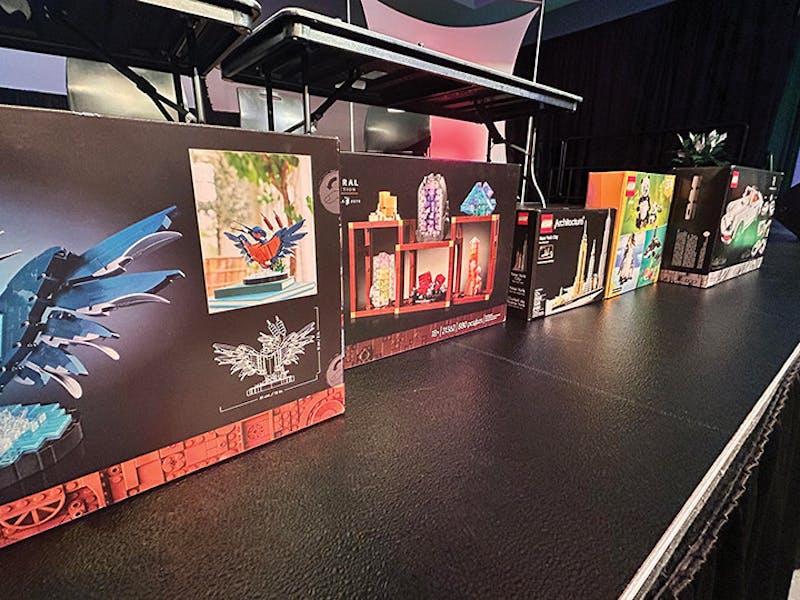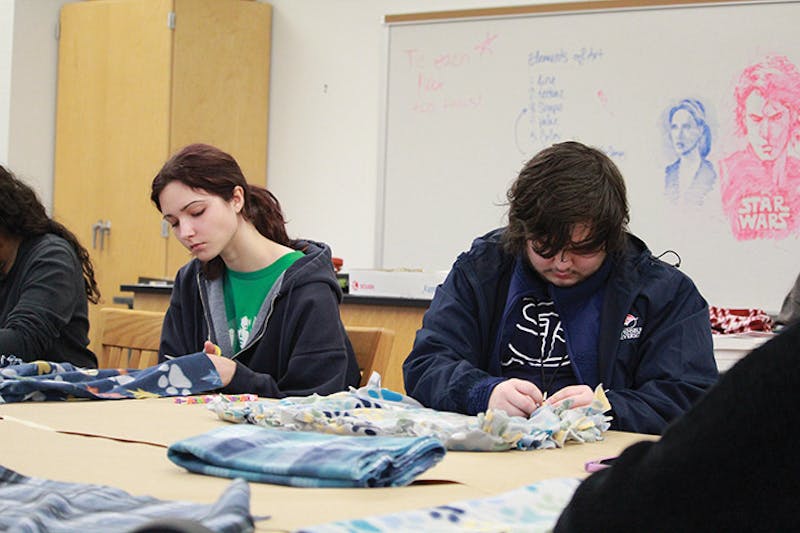Women’s and men’s fashion changed rapidly from the 1960s to the 1980s. Women specifically were leaning more into their professional goals as it became more acceptable for them to find work outside the home, and they were also becoming more sexually liberated. From the miniskirt to athletic wear, these decades were filled with vibrant fashions, and pants slowly but surely became more of a central figure in women’s lives.
The beginning of the ’60s were heavily influenced by the ladylike elegance of the ’50s. Style icons Jacqueline Kennedy and Audrey Hepburn served as inspiration. Kennedy wore boxy skirt-suits, a-line and shift dresses with matching accessories, and Hepburn wore iconic Givenchy fashions in “Breakfast at Tiffany’s” and “Paris When it Sizzles.” Shippensburg University student Carol Schumacher Laite donned a dress that was both ladylike and romantic in red velveteen to the 1964 Sigma Tau Gamma White Rose Formal.
Additionally, the focus on the youth that had started in the ’50s continued as women began to look toward the “Swinging London” teenagers. Swinging London began in 1955 but peaked in the ’60s, bringing about “the Beatles and the miniskirt, Twiggy and the Who,” writes Fashion History Timeline. Mary Quant’s shop Bazaar, with bright, colorful, childlike styles, was incredibly popular and led to boutique style becoming increasingly popular as well. Quant’s most revolutionary design was the minidress and miniskirt. Though they were shocking, they were a very common look among young women. Styles were playful and took after elements like space, with a focus on scientific progress.
At Shippensburg University, there was a dress code for Sunday dinner, where women were required to wear dresses and skirts while men were required to wear suits and ties. While this was abolished in 1970, many other schools also practiced similar rules. At the University of Nebraska, women were not supposed to wear pants to class, and they were forbidden in dining halls every day except Friday evening and Saturday. Pants were still not accepted in a formal setting in the ’60s but were just beginning to be accepted professionally.
Toward the end of the ’60s, after the “mod” movement, came the “hippie” style. Skirts dropped back down to mid-calf, and by 1969, the maxi skirt was in fashion. Fashion History Timeline notes, “Suede, headbands, kaftans, Afghan coats, beads and other non-Western elements of adornment were embraced as were flowing skirts and secondhand clothing.”
Fashion in the ’70s followed the hippie style of the late ’60s, placing such an emphasis on handmade accessories and materials that it crept into the larger fashion scope and found a place on runways. Boutique style had also carried over from the ’60s, making fashion more accessible. Fashion History Timeline also points out how the ’70s became known as the “Polyester Decade” because of the rise of new synthetic fabrics. This range of new fabrics meant that fashion could be bought at any price point.
Despite this new fascination with polyester, other fabrics like satin, lycra, sequins and velvet ruled nightlife in the ’70s.
“Classy, full-length figure-huggers battled with short, sparkly halter necks and hot pants for center stage” writes Fashion History Timeline.
Pictured are pieces from Shippensburg students Sheree A. Holler and Craig Zumbrun. Holler, who graduated in 1979, donned classically ’70s fashion with her bell bottom pants and colorful turtleneck shirt. This ensemble reflects the ’70s love of bell bottoms and bright patterns. In 1970, Zumbrun sported this set of bell bottoms and jacket to student-led anti-Vietnam war protests. The jacket specifically exemplifies the Western elements – specifically suede – of ’70s hippie style that could be seen on both men and women.
Throughout the ’70s, women began to feel more liberated as they gained sexual freedoms, and this could be seen in the clothes they wore. Women were also gaining more opportunities to do work outside of the homemaker role, and their style reflected this as well. New styles were modeled after menswear, and suits and trousers became acceptable workplace wear and formal wear. Bianca Jagger wore an iconic white tuxedo to Studio 54 at this time and many other celebrities could be seen in similar styles. Trousers went from only being acceptable in the home to being seen all around. New, expressive patterns and accessories also made pants far more stylish and glamorous.
The late ’70s introduced sportswear items like sweatshirts, bandeau tops, leotards and leggings that became a staple of ’80s fashion, notes Fashion History Timeline. This sportswear craze marked the beginning of the ’80s and ushered in a fitness craze to match. Dancewear like off-shoulder sweatshirts and leggings ruled the beginning of the ’80s, emphasizing women’s bodies instead of shaping them or holding them in place. The early ’80s also embraced the “New Romantic” style, following the prairie dress styles present in the ’70s. Fashion History Timeline points out how “puffed sleeves, oversized accessories such as belts and bows, and historical references made bold statements.”
As the ’80s continued, “power dressing” became a major trend for both men and women. The dominant trend in ’80s fashion was “bigger is better,” and this style of dress focused on large elements, like accentuating the shoulders with shoulder pads and incorporating bold accessories. Women were entering male-dominated spaces, so they dressed as though they were the ones in control, says Fashion History Timeline, adopting the male power suit as their own. Classic menswear like blazers, knit sweaters and button downs were also made into elegant, preppy womenswear. Women began to adopt more and more traditionally masculine clothing as they became more independent.
Across these different eras, one thing is clear: women began to have more agency, and this affected how they dressed. Women finally began to wear pants in professional and formal settings, showing a real change in attitudes about what modesty and femininity meant to and for women. Clothing is a major indicator of not only social status, but identity. As women became more liberated, their clothes reflected these societal and internal changes of thought.




The Slate welcomes thoughtful discussion on all of our stories, but please keep comments civil and on-topic. Read our full guidelines here.